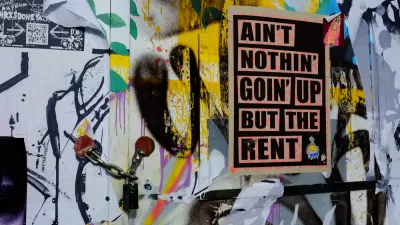Close to one-third of American neighborhoods have very few housing options for renter households, who tend to be disproportionately people of color and low-income families.

An article by Whitney Airgood-Obrycki and Sophia Wedeen for the Joint Center for Housing Studies of Harvard University highlights the lack of available rental housing in many suburban, higher-income neighborhoods, as revealed by a new analysis of data from the American Community Survey.
This matters because “Exclusionary land use quite likely contributes to the presence of these rental deserts and the resulting patterns of socioeconomic and racial segregation, since renters are disproportionately lower-income and people of color,” the authors write.
According to the authors’ definition, ‘rental deserts,’ which make up roughly 31 percent of residential neighborhoods in the United States, exist when less than 20 percent of housing units in an area are available or occupied as rentals. “With few affordable options for lower-income renters, the median household income in rental deserts is $86,000. Median incomes in high-rental neighborhoods, however, are less than half that at $42,000, while mixed-tenure neighborhoods fall in the middle at about $60,000.”
In rental deserts, less than 21 percent of household heads were people of color, compared to 67 percent in high-rental neighborhoods. “Increasing the multifamily supply and increasing rental options in neighborhoods where few exist can help expand the geographic options available to renters, and reducing zoning barriers is a step in the right direction.”
The report recommends zoning changes, but cautions that they’re not a silver bullet. “Building homes at lower price points and expanding housing subsidies in a range of neighborhoods will also be necessary to create socioeconomically integrated, mixed-tenure communities.”
FULL STORY: RENTAL DESERTS PERPETUATE SOCIOECONOMIC AND RACIAL SEGREGATION

Alabama: Trump Terminates Settlements for Black Communities Harmed By Raw Sewage
Trump deemed the landmark civil rights agreement “illegal DEI and environmental justice policy.”

Study: Maui’s Plan to Convert Vacation Rentals to Long-Term Housing Could Cause Nearly $1 Billion Economic Loss
The plan would reduce visitor accommodation by 25% resulting in 1,900 jobs lost.

Planetizen Federal Action Tracker
A weekly monitor of how Trump’s orders and actions are impacting planners and planning in America.

Wind Energy on the Rise Despite Federal Policy Reversal
The Trump administration is revoking federal support for renewable energy, but demand for new projects continues unabated.

Passengers Flock to Caltrain After Electrification
The new electric trains are running faster and more reliably, leading to strong ridership growth on the Bay Area rail system.

Texas Churches Rally Behind ‘Yes in God’s Back Yard’ Legislation
Religious leaders want the state to reduce zoning regulations to streamline leasing church-owned land to housing developers.
Urban Design for Planners 1: Software Tools
This six-course series explores essential urban design concepts using open source software and equips planners with the tools they need to participate fully in the urban design process.
Planning for Universal Design
Learn the tools for implementing Universal Design in planning regulations.
Caltrans
Smith Gee Studio
Institute for Housing and Urban Development Studies (IHS)
City of Grandview
Harvard GSD Executive Education
Toledo-Lucas County Plan Commissions
Salt Lake City
NYU Wagner Graduate School of Public Service





























